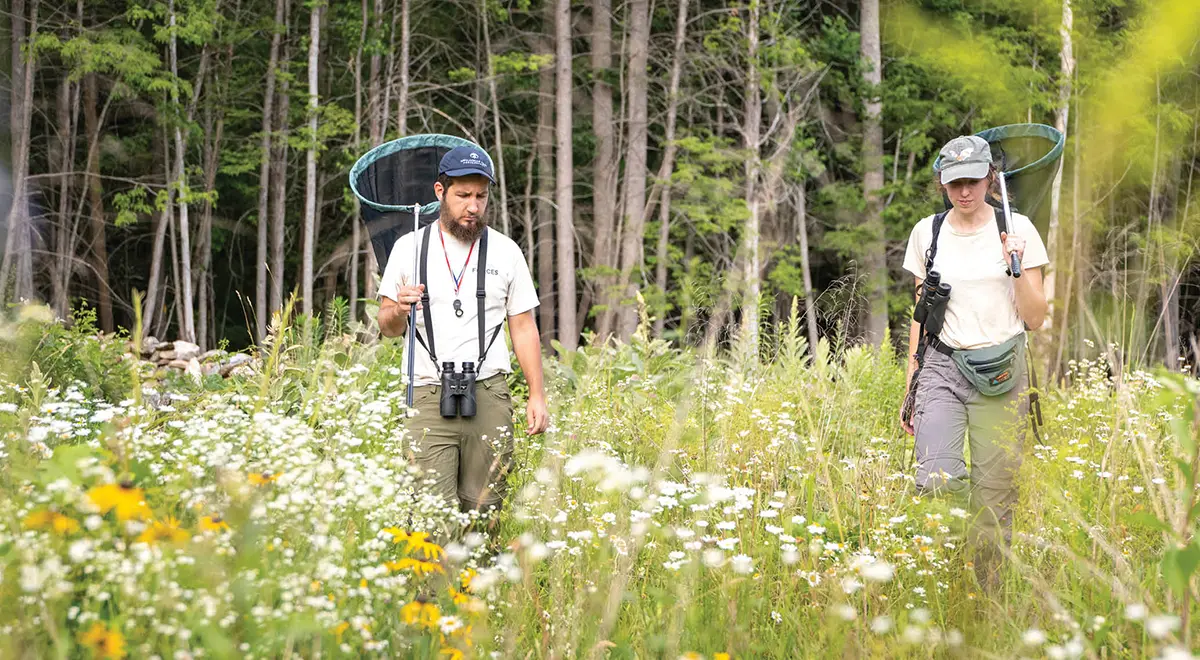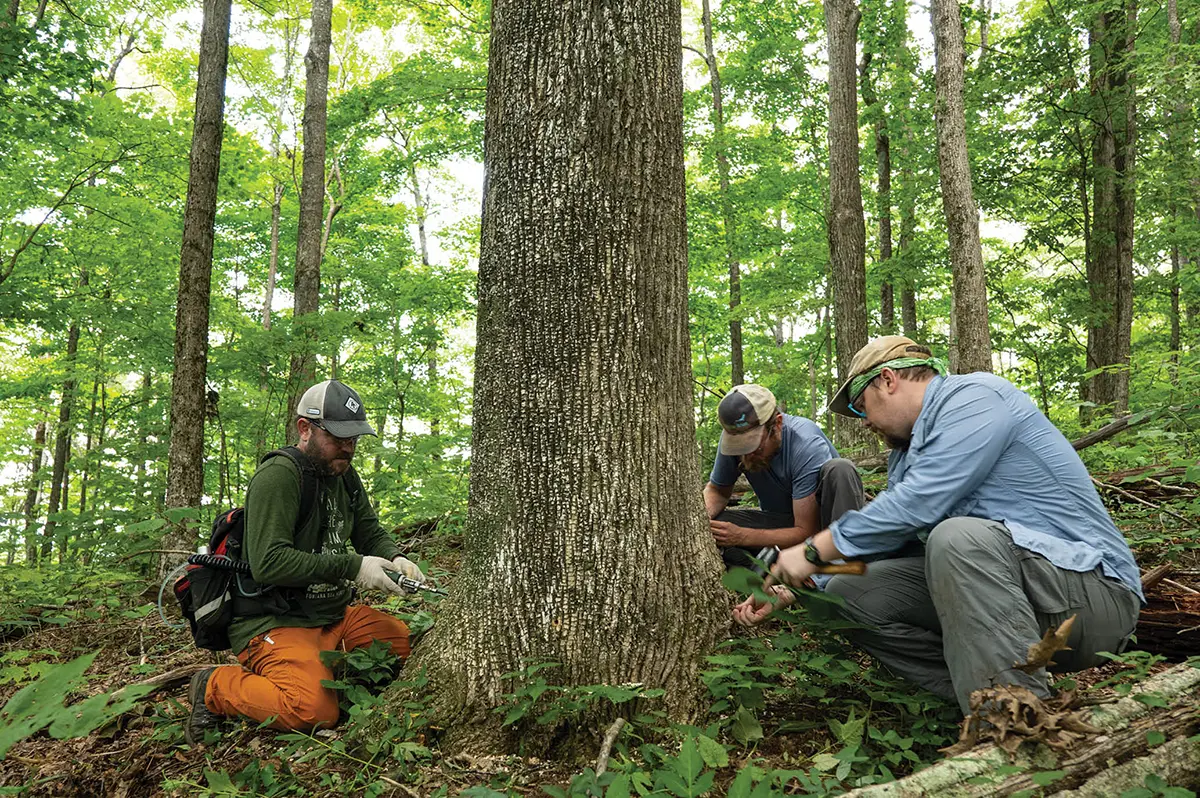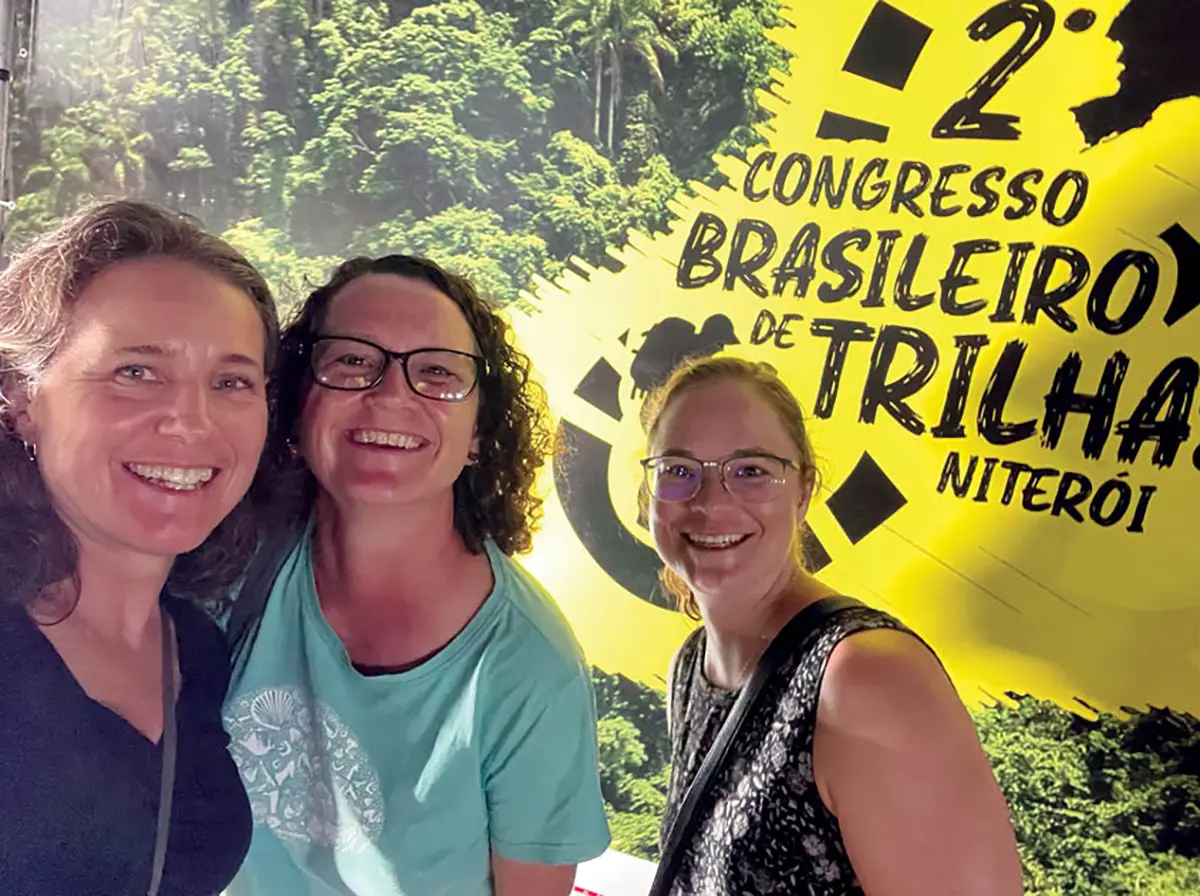The dictionary definition of a conservancy is an organization designated to conserve and protect natural resources. What sounds simple on paper is, of course, far more complex on the ground — especially for a resource like the A.T., which traverses over 2,198 miles of diverse terrain from marshland to forest, grassy bald to alpine tundra.
Since I began my journey with the ATC, I have had a close-up look at what a conservancy does, and I am proud of what our small but mighty team has accomplished in protecting what Benton MacKaye articulated at the fifth meeting of the ATC conference, in 1931: “A realm and not a trail marks the full aim of our effort. The trail is but the entrance…”
Every year, the team manages hundreds of acres that enhance views and are home to declining species such as golden-winged warblers, metalmark butterflies, and other species that prefer early successional habitat. Also known as young or disturbed habitats, early successional habitats were historically maintained through natural processes such as wildfires, flooding, windstorms, and the activities of large herbivores. These habitats support diverse wildlife by providing both food and cover. Could you imagine hiking the entire Trail without enjoying a monarch butterfly flitting across a meadow?
Part of the work of maintaining critical ecosystems requires addressing immediate threats to the health of an entire species. Many people are familiar with the American chestnut story. Once a keystone species across the Appalachian forests, the tree is now gone due to the chestnut blight. To every extent possible, we don’t want that to happen again to other forest species. That’s why the ATC’s team has worked in recent years to treat the emerald ash borer (EAB), an invasive insect species that has been causing significant damage to ash trees (Fraxinus species) throughout North America. We are working swiftly to protect ash trees against EAB in an attempt to conserve some individuals that could ensure the survivability of the species once EAB has declined.

The ATC supports land conservation partners by providing leverage grants that allow our partners to move land acquisition projects across the finish line. Thanks to generous donations from The Volgenau Foundation and other private donors, the ATC has recently contributed nearly $4 million towards conserving over 80,000 acres within the Trail landscape.
The ATC also undertakes strategic land acquisition work through a land trust that now holds nearly 6,000 acres in fee or easements. Most recently, we worked to conserve nearly 1,000 acres in the Catawba Valley right under McAfee Knob. This area sits just outside the expanding outskirts of Roanoke, Virginia, and is vulnerable to new development. Today, the A.T. views, healthy forests, and headwaters of the Chesapeake Bay watershed in this region are protected forever, for all. The team is now planning and implementing forest restoration projects in this area and is considering opportunities to accommodate recreation and overnight use.

Last but not least, the ATC’s conservation agenda would not be complete without our advocacy work on Capitol Hill. During the 1980s and ’90s, the ATC’s then Executive Director, Dave Startzell, was a force to secure federal commitments to complete the Trail corridor. Today, over 99 percent of that corridor is protected. But that doesn’t mean our work to actively engage Congress and federal agencies has ended. Given our broader landscape conservation goals, we need sustained policy-focused capacity. Since 2014, through the efforts of our federal policy director, we have worked with Congressional partners to create an A.T. House Caucus and have engaged in targeted federal policies to increase funding for conservation work.

Benton MacKaye’s prescient vision for the Trail is as relevant today as 100 years ago. With the Trail on the ground, we can, and should, invest more to achieve the broader conservation vision. As a Conservancy, we will continue strategizing, planning, and implementing projects that sustain this landscape into the next century and beyond.